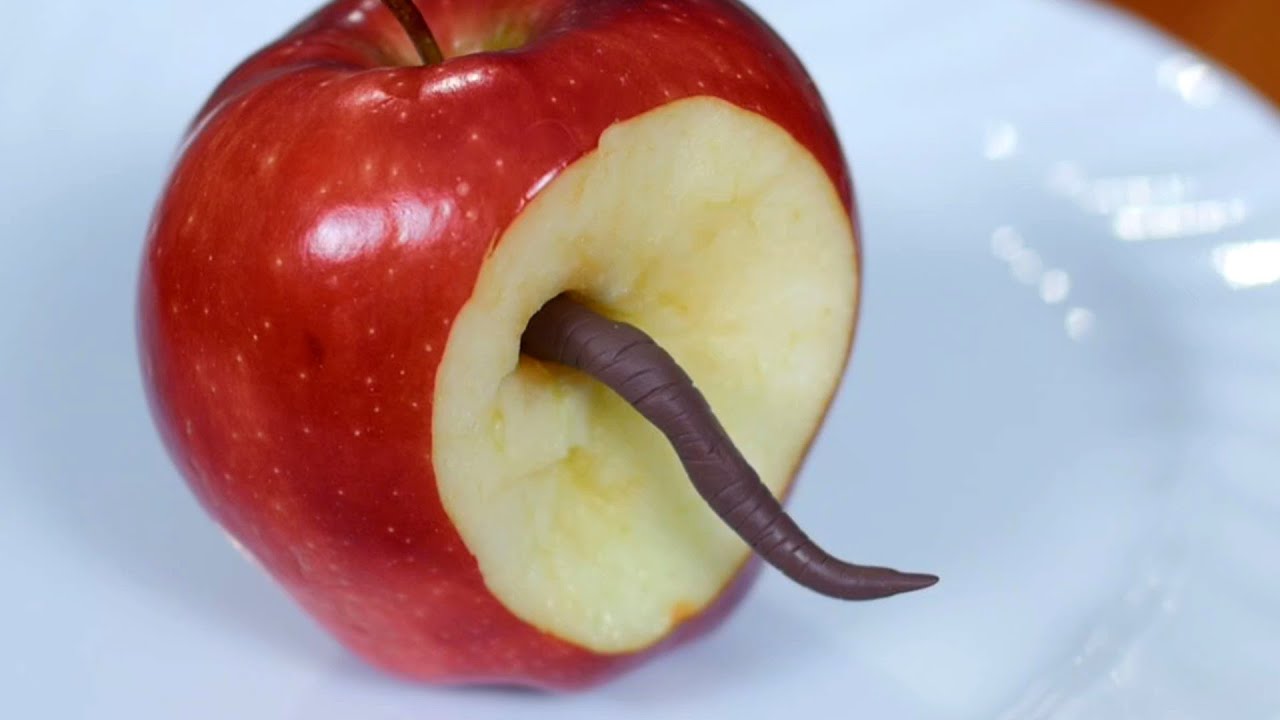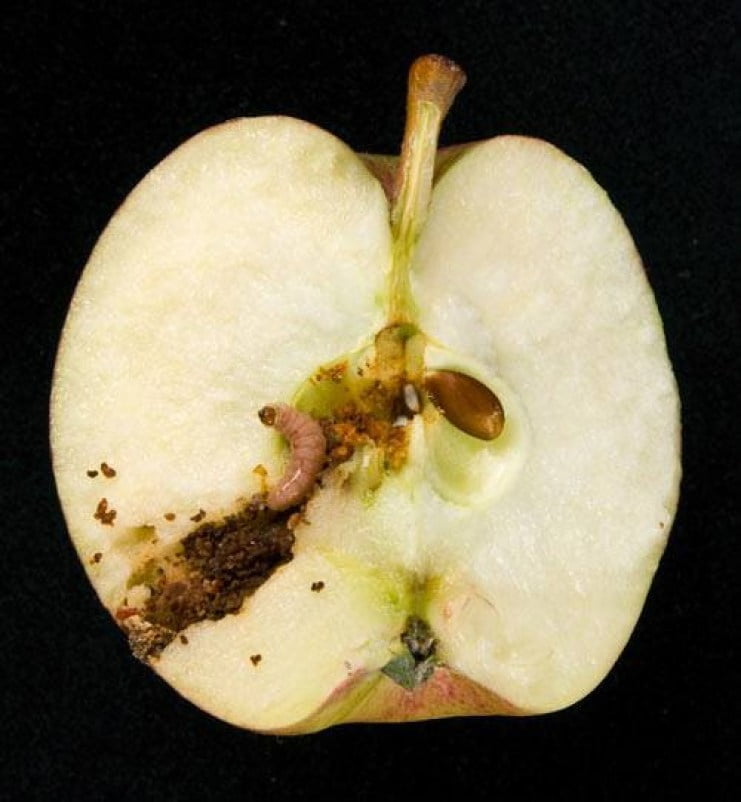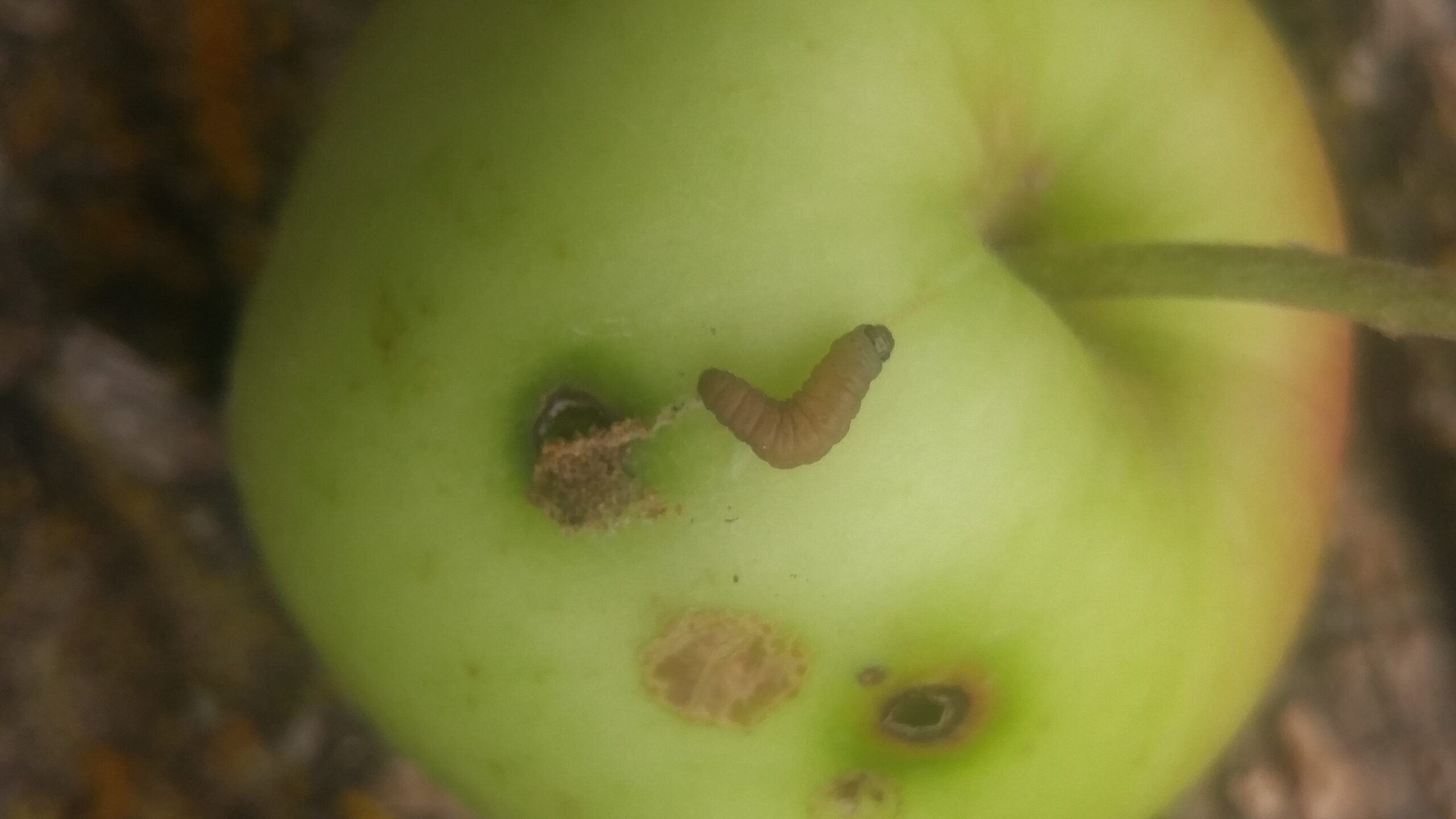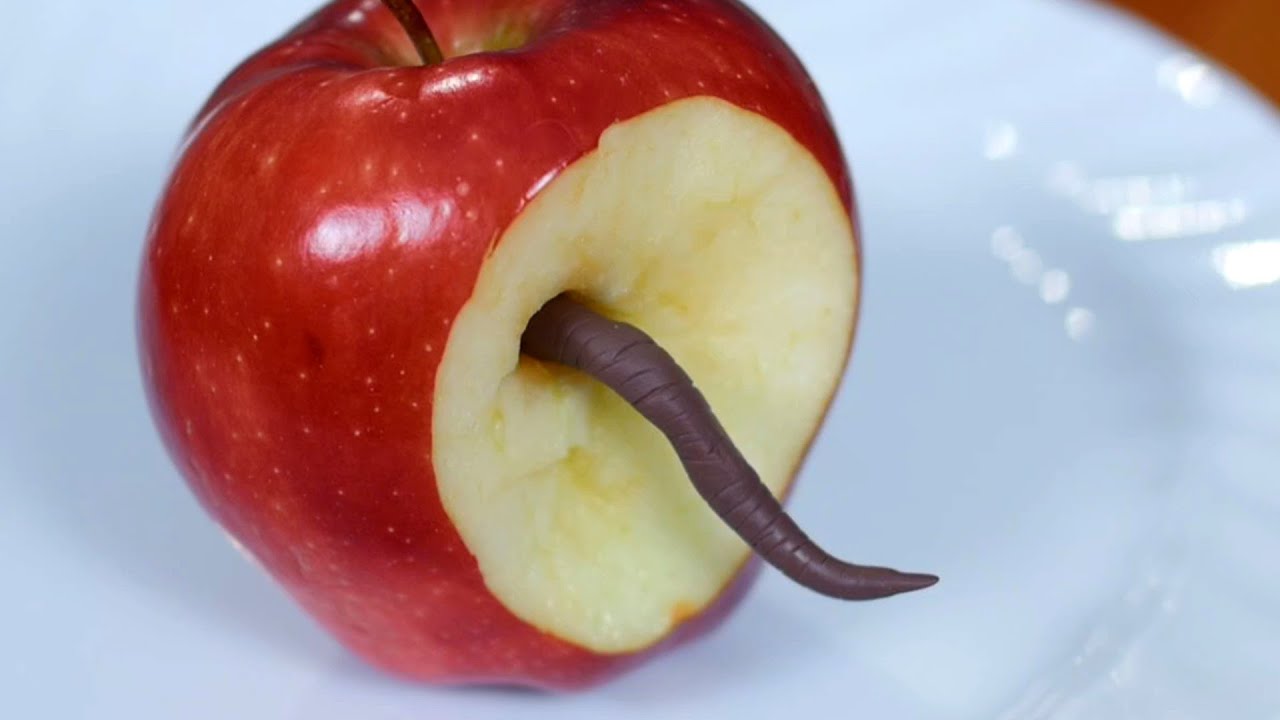Apples, a staple fruit in many households, are not exempt from natural intruders. Have you ever wondered how those tiny creatures, known as worms, find their way into these succulent fruits? Despite diligent precautions, worms somehow manage to infiltrate and feast upon the juicy interior, leaving a trail of destruction behind. In this article, we will explore the intriguing phenomenon of how worms manage to infiltrate apples, shedding light on their journey from the core to the surface. Strap on your curious minds as we unveil the secrets behind this puzzling apple infestation.

Natural Habitation of Worms
Life Cycle of Apple Maggots
The life cycle of apple maggots begins when adult flies emerge from the soil in early summer. These flies lay their eggs on the surface of young apple fruits, particularly near the calyx end. Once the eggs are laid, they quickly hatch into tiny white larvae, which then burrow into the flesh of the apple. Over the course of a few weeks, the larvae feed on the apple, tunneling through the flesh and causing damage.
Common Types of Worms Found in Apples
There are several common types of worms that are found in apples. One of the most prevalent is the codling moth larva. These worms are creamy white or pinkish in color and can grow up to 1/2 inch long. They have dark brown heads and leave behind telltale tunnels in the flesh of the apple. Another common worm found in apples is the apple maggot, which is the larva of the apple maggot fly. These tiny white maggots tunnel through the apple, leaving behind brown trails and causing rotting flesh.
External Factors that Invite Worms
Fruit Fly Infestation
One of the external factors that can invite worms into your apples is a fruit fly infestation. Fruit flies are attracted to overripe and decaying fruits, which provide a suitable environment for them to lay their eggs. If you have infested fruits in your garden or nearby, the fruit flies can easily transfer to your apple trees and lay their eggs on the fruits, leading to worm infestation.
Attracting Worms Through Fallen Fruits
Another external factor that can attract worms to your apple trees is fallen fruits. Apples that have fallen from the tree and are left on the ground provide a perfect breeding ground for flies and other insects. The larvae from these insects can then infest the fallen fruits and move on to infest the remaining fruits on the tree.
Damaged or Bruised Apples
Damaged or bruised apples are more susceptible to worm infestation. When the skin of the apple is broken, it creates an entry point for flies and other insects to lay their eggs. The larvae then have easy access to the flesh of the apple, leading to infestation. It is important to handle apples with care to avoid bruising or damaging them, especially during harvest and storage.

Internal Factors that Attract Worms
Eggs Laid in Blossoms
Worms can also get into apples when the eggs are laid in the blossoms. Insects such as moths and flies can lay their eggs on the flowers of apple trees, which eventually develop into larvae inside the fruit. This makes it crucial to monitor and manage pest populations during the flowering period to prevent infestation.
Larvae Penetration Through Skin
Once the eggs are laid on the surface of the apple, the larvae can penetrate the skin and enter the flesh. The skin of the apple may appear intact, but the tiny larvae can still find their way inside through microscopic openings or wounds. This highlights the importance of thorough inspection and careful handling of apples to prevent any potential entry points for larvae.
Apples Infected from Within
In some cases, the worms may already be present inside the apple before harvest. This can happen when the tree has been infected with diseases or pests, allowing the larvae to develop within the fruit. If proper pest management and control measures are not implemented, the apples can become a breeding ground for worms, leading to a higher risk of infestation.
Presence of Worms – Signs and Symptoms
Visible Holes and Entry Points
One of the most obvious signs of worm infestation in apples is the presence of visible holes on the surface of the fruit. These holes can vary in size and may have a rough appearance. They are typically an indication that worms have entered the fruit through eggs or larvae.
Tunneling and Trails Inside Apples
Upon closer inspection, you may also notice tunneling and trails inside the apples. As the worms feed on the flesh of the apple, they create pathways that can be seen as brown trails. These tunnels can vary in length and depth, depending on the extent of infestation.
Brown Trails and Rotting Flesh
Along with tunneling, infested apples may also exhibit brown trails and rotting flesh. This occurs as the worms continue to feed and cause damage to the internal structure of the fruit. The rotting flesh can lead to a foul odor and a mushy texture, making the apple unfit for consumption.

Preventing Worm Infestation
Choosing Resistant Apple Varieties
One of the key steps in preventing worm infestation in apples is selecting apple tree varieties that are resistant to common pests and diseases. Certain apple varieties have natural defenses against worms and other pests, making them less susceptible to infestation. Consulting with local agricultural experts or researching resistant varieties suited to your region can help in making informed decisions when planting apple trees.
Monitoring and Trapping Adult Flies
Monitoring the presence of adult flies in your garden or orchard is crucial in preventing worm infestation. By setting up traps or using pheromone lures, you can attract and capture adult flies before they have a chance to lay eggs on your fruit. Regularly inspecting the traps and monitoring sticky traps can help you gauge the fly populations and take appropriate control measures.
Proper Apple Tree Maintenance
Maintaining good overall tree health is essential in preventing worm infestation. Pruning your apple trees to remove dead or diseased branches reduces the potential hiding places for pests. Regularly inspecting the trees for any signs of pest or disease infestation and taking appropriate action, such as applying organic sprays or natural pest control methods, can significantly reduce the risk of worm infestation.
Removing Worms from Infested Apples
Cutting Out the Affected Area
If you notice worms in your apples, one method of removal is to cut out the affected area. This involves carefully slicing away the section of the apple that contains the worm or affected flesh. It is important to cut deep enough to remove all traces of the worm and any surrounding damaged flesh to prevent further infestation.
Soaking Apples in Saltwater
Another effective method to remove worms from infested apples is by soaking them in saltwater. This method involves dissolving salt in water and submerging the apples for about 10 minutes. The high salt concentration in the water helps to kill the worms or force them out of the fruit. After soaking, thoroughly rinse the apples with clean water before consuming or storing.
Freezing the Infested Apples
Freezing the infested apples is another way to kill the worms. Place the infested apples in a freezer bag or container and freeze them for at least 48 hours. The extreme cold temperatures will kill the worms and prevent any further infestation. However, it is important to note that freezing may affect the texture and quality of the apple, so it is not recommended for long-term storage.

Treating Infested Apple Trees
Pruning and Destroying Affected Fruits
When dealing with infested apple trees, it is important to take immediate action to prevent the spread of worms. Pruning and destroying affected fruits, along with any nearby fallen fruits, can help eliminate potential breeding grounds for worms. Properly dispose of the pruned fruits to ensure that the worms do not have a chance to infest other areas.
Applying Pesticides in Recommended Dosages
In severe cases of worm infestation, the use of pesticides may be necessary. It is crucial to use pesticides according to the recommended dosages and follow the instructions provided by the manufacturer. Be mindful of the potential environmental impacts of pesticide use and consider opting for organic or natural alternatives whenever possible.
Using Natural Pest Control Methods
If you prefer to avoid or minimize the use of pesticides, there are natural pest control methods that can help manage worm infestation. These methods include introducing beneficial insects that prey on the worms, such as parasitic wasps or nematodes. Additionally, implementing cultural practices like regular pruning, mulching, and maintaining proper tree nutrition can create an unfavorable environment for worms to thrive.
Safe Storage and Preservation Techniques
Inspecting and Sorting Apples
Before storing apples, it is important to inspect and sort them carefully. Remove any apples that show signs of damage, such as visible holes or tunnels, rotting flesh, or excessive bruising. Sorting the apples based on their condition ensures that any infested ones are separated and do not contaminate the healthy ones during storage.
Properly Cleaning and Drying Apples
Cleaning and drying the apples before storage is crucial to prevent the growth of mold or bacteria. Gently wipe the apples with a clean cloth or paper towel to remove any dirt or debris. Allow the apples to air dry completely before placing them in storage containers.
Storing Apples in Controlled Conditions
Apples should be stored in controlled conditions to prolong their freshness and reduce the risk of infestation. The ideal storage temperature for apples is around 32 to 45 degrees Fahrenheit (0 to 7 degrees Celsius). Additionally, maintaining a moderate humidity level of about 90% can help prevent the apples from drying out. It is important to store the apples in well-ventilated containers, such as perforated plastic bags or apple crates, to allow for proper air circulation.

Common Misconceptions About Worms in Apples
Worm Infestation Indicates Organic Produce
Contrary to popular belief, worm infestation in apples does not necessarily indicate that the produce is organic. While organic farming practices may limit the use of certain pesticides, it does not guarantee that the apples are entirely free from pests. Worm infestation can occur in both organic and non-organic apples, highlighting the importance of proper pest management and control measures.
All Worms in Apples are Harmful
Not all worms found in apples are harmful or pose a health risk. There are cases where tiny worms, commonly known as apple maggots, are present in apples but are not considered a health concern. These maggots are typically killed during cooking or processing and pose no danger when consumed. However, it is still advisable to avoid consuming apples with visible signs of worm infestation to maintain food safety standards.
Worms in Apples are a Recent Phenomenon
The presence of worms in apples is not a recent phenomenon. Worms have been infesting apples for centuries, and their occurrence is not confined to any specific era or geographic location. The perception of increased worm infestation in recent times may be attributed to improved detection methods and a greater awareness of food safety issues.
Conclusion
Understanding the natural habitat and life cycle of worms in apples is crucial for preventing infestation and maintaining the quality of apple crops. By addressing both external and internal factors that attract worms, implementing preventative measures, and adopting safe storage and preservation techniques, you can reduce the risk of worm infestation and enjoy healthy, worm-free apples. Remember to consistently monitor and maintain your apple trees to mitigate the risk of infestation, and seek advice from local agricultural experts to ensure effective pest management practices.



